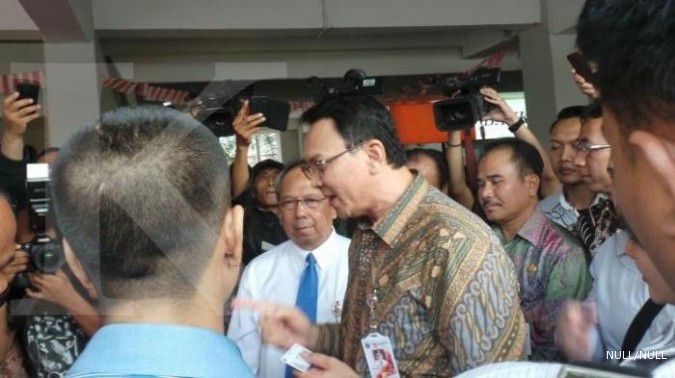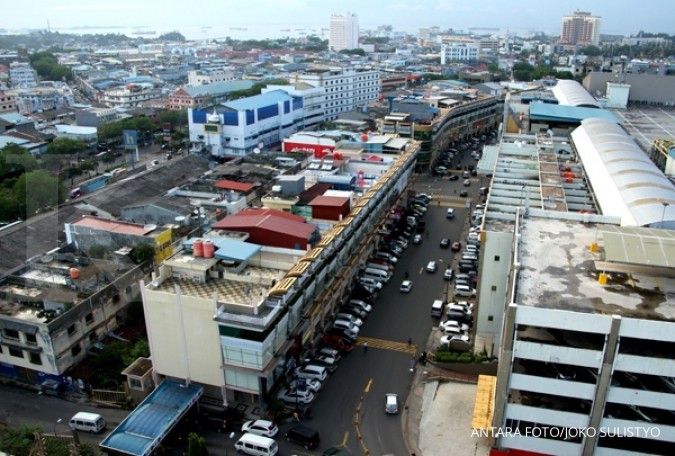JAKARTA. Bank Indonesia (BI) will closely monitor the increase of bad loans, particularly in four business sectors, as they are slowly approaching the benchmark set by financial regulators.
In a statement issued on Friday, the central bank said that by the end of July it had detected growing non-performing loans (NPL), especially in the construction, mining, trading and social services sectors.
In July, the NPL ratios climbed to 4.43 percent and 3.09 percent in construction and mining, respectively, from 4.24 percent and 2.49 percent recorded a month before.
Meanwhile, in trading, the NPL ratio surged to 3.06 percent in July from 2.92 percent in June, and it stood at 2.96 percent in July for the social services sector, up from 2.48 percent in the previous month.
BI, along with the Financial Services Authority (OJK), sets the NPL ratio benchmark at 5 percent.
BI deputy governor Halim Alamsyah said the central bank would coordinate with the OJK to monitor the four sectors to prevent increasing bad loans from affecting other business segments.
“It seems that loans under the collectability 2 category are tending to rise. We are now trying to find out if it’s only temporary,” he told reporters.
At present, regulators classify loans according to their quality or collectability. Loans under collectability 1 or “pass” are those with on-time payments and loans under collectability 2 or “special mention” are those with 90 days in arrears.
Meanwhile, collectability 3 or “substandard” classifies loans with 90 to 120 days in arrears, collectability 4 or “doubtful” with 120 to 180 days in arrears, and collectability 5 or “loss” with more than 180 days in arrears.
Halim said BI was also assessing whether increasing bad debts in construction were related to specific projects. “For the mining sector, we know that the loans were disbursed to projects outside Java,” he said.
However, despite the increase, the overall NPL ratio was still below the benchmark as it stood at 2.24 percent as of July, according to BI’s statement. It emphasized that the financial system’s stability was still solid, citing the banking industry’s resilience and the manageable performance of the money market.
“The banking industry’s capital adequacy ratio or CAR remained high in July as it reached 19.39 percent, much higher than the minimum requirement of 8 percent,” it said.
OJK commissioner for banking supervision Nelson Tampubolon also acknowledged the increase in bad loans, but said it was still “within the tolerable level”.
“We will communicate with banks that show a high NPL increase. That is part of our supervisory approach. One way is by asking them to review their credit growth,” he said.
Bank Rakyat Indonesia (BRI) finance director Achmad Baiquni said the state lender had also seen a rise in its overall bad loans and that it would provide higher provision to cope with the increase.
“Everything is still on track. There is an increase in the provision, but it is not very significant. Hopefully it won’t affect our bottom line,” he said.
Separately, Bank Mandiri president director Budi Gunadi Sadikin said its NPL ratios in the four sectors had not exceeded 3 percent and that it had low exposure to the mining sector. (Tassia Sipahutar)
BI on alert as bad loans increase
September 15, 2014, 10.38 AM
/2014/05/08/2101349107p.jpg)
ILUSTRASI. Kode Redeem FF hari ini 29 Maret 2023, Ambil Reward Skin Gloo Wall hingga Pet
Source: The Jakarta Post
| Editor: Hendra Gunawan
Latest News
-
December 19, 2025, 05.35 AM
Bank of Japan Set to Raise Interest Rates to 30-Year High
-
December 18, 2025, 05.28 PM
Christmas Lights, World-Class Infrastructure, and Moscow’s MICE Ambitions
-
December 18, 2025, 05.17 PM
Moscow Accelerates Business Tourism Drive Through Meet Global MICE Congress 2025
-
December 18, 2025, 03.45 PM
Indonesia's October Palm Oil Stocks Fall 10% m/m On Higher Domestic Demand
-
December 18, 2025, 09.56 AM
GLOBAL MARKETS-Tech Jitters Dent Stocks Before Central Banks Take Centre Stage
-
December 18, 2025, 05.36 AM
GLOBAL MARKETS-Stock Indexes Fall on AI Angst While Gold and Silver Rise with Oil
-
December 17, 2025, 02.56 PM
Bank Indonesia Keeps Rates Steady, Focuses on Rupiah Stability
-
December 17, 2025, 12.16 PM
Indonesian Employers Group Says Proposed Minimum Wage Rise is Too High
-
December 17, 2025, 08.52 AM
GLOBAL MARKETS-Shares Hesitant After US Jobs Data, Oil Jumps on Venezuela Blockade














